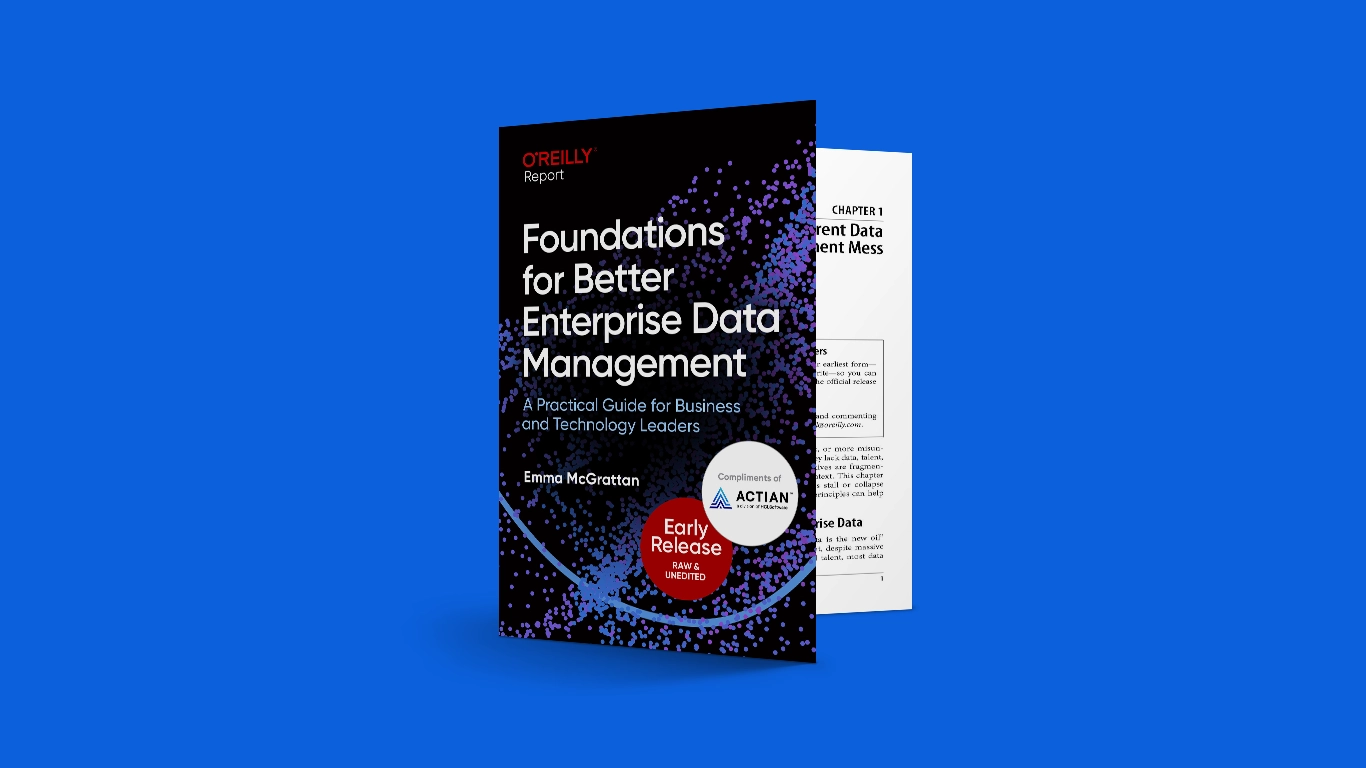A data mesh is an architecture for implementing the democratization of data across a business. Unlike centralized data warehouses, a data mesh federates data and delegates data ownership to the specialist business domains, who publish their data as a service for all business functions to consume it. The result is a more agile data architecture that allows individual business units some autonomy to manage their core data assets.
Why Use a Data Mesh Architecture?
The primary idea behind mesh architectures is to enable a more flexible and scalable data architecture. Monolithic, centralized enterprise data warehouses can be cumbersome to implement, inflexible and expensive to change. By devolving the curation and administration of domain-specific data sets to the business functions that know them best, the business can better adapt to changing business conditions.
One of the primary reasons why the data mesh model scales is because it avoids overburdening centralized data teams. This is accomplished by propagating standard best practices across business domains. Skills shortages are a common cause of big data and data lake projects stagnating into data swamps. Skills gained by staff in one business domain are easily transferred to other domains, reducing training times and allowing projects to be delivered faster.
Maintaining Interoperability Between Pools of Data
A core component of a data mesh is the built-in universal interoperability bus that all the domain-specific data warehouses or data marts plug into. This avoids the problems of traditional siloed data marts that often use duplicate, out-of-sync data, and ad hoc tools. Curated data held by one department is available to related business units. Each departmental data warehouse publishes its data-as-a-product to the interoperability bus.
How is a Data Mesh Different to Data Fabric?
A data mesh is composed of an interconnected set of domain-specific data product services with ownership responsibilities delegated to the various domains in a business. A data fabric creates a single virtual centralized system without distributed data ownership.
Key Elements of a Data Mesh
The main components of a data mesh are:
- Data sources.
- Data infrastructure.
- Domain-specific data-as-a-service.
- Shared standardized governance, data quality and metadata conventions.
Data Ownership and Responsibilities
Each domain data owner agrees with its peers’ data quality and availability service levels. Every domain uses centralized standards for data pipelines. The data mesh provides standardized storage and streaming infrastructure. ETL pipelines can be domain specific but need to use standard metadata labels, data formats, cataloging, lineage, and data governance conventions to ease interoperability and promote compliance.
Benefits
Some of the many benefits of data mesh architectures include the following:
- Faster time to value for data-oriented projects.
- Lines of business can respond quickly to competitive, regulatory, and market pressures or opportunities to explore new markets.
- Shared tools, standards, and processes benefit the whole business by increasing efficiency by reducing duplicated efforts.
- Avoids central resource bottlenecks by delegating data responsibilities to specialist business domains that best understand their data needs.
- More modular data services are easier to understand and use. As with microservices, refactoring monolithic applications into smaller, more digestible components makes them easier to share and consume.
- Consistent application of data quality and data governance requirements across a business improves cooperation and eases future data integration efforts.
- Data and process transparency in the mesh eliminates departmental pools of unconnected, siloed data.
- Businesses get more value from their data because federating it across the organization enables better data-driven decision-making.
What are the Characteristics of a Successful Data Product?
The most significant success factor for a data product is adoption. The characteristics that drive adoption include discoverability, reliability, trustworthiness, security, and data quality.
Because a data mesh is essentially a self-service model, published data needs to be easy to find, well-documented, and easy to consume. Consumers can provide feedback to domain owners on the quality and utility of a data product to ensure shortcomings are addressed and to enable continuous refinement.
Data Mesh Management
Data products and pipelines need to be supervised at the domain and infrastructure levels to ensure high availability levels and address failures. Monitoring and observability capabilities are therefore designed in to make the life of developers and infrastructure teams easier.
Data products should be protected by encrypting data at rest and in motion. Versioning of data services enables the rollback of bad deployments.
Actian and the Data Intelligence Platform
Actian Data Intelligence Platform is purpose-built to help organizations unify, manage, and understand their data across hybrid environments. It brings together metadata management, governance, lineage, quality monitoring, and automation in a single platform. This enables teams to see where data comes from, how it’s used, and whether it meets internal and external requirements.
Through its centralized interface, Actian supports real-time insight into data structures and flows, making it easier to apply policies, resolve issues, and collaborate across departments. The platform also helps connect data to business context, enabling teams to use data more effectively and responsibly. Actian’s platform is designed to scale with evolving data ecosystems, supporting consistent, intelligent, and secure data use across the enterprise. Request your personalized demo.
The Three Components of a Data Product
Code
including data pipelines, policies and application interfaces.
Data and Metadata
can include tables, views, graphs, and associated metadata.
Infrastructure
includes scripts to build and instantiate a data product service.
FAQ
A data mesh is a decentralized data architecture that treats data as a product and distributes ownership of datasets to domain-specific teams. Instead of relying on a single centralized data platform, each domain manages, governs, and serves its own high-quality data products.
Traditional architectures centralize data engineering, pipelines, and governance within one team, often creating bottlenecks. A data mesh distributes these responsibilities to domain teams, enabling faster access to trusted data and reducing operational bottlenecks across the organization.
The four foundational principles are:
- Domain-oriented data ownership.
- Data as a product.
- Self-serve data infrastructure as a platform.
- Federated computational governance.
Large enterprises with many domains, distributed teams, or rapidly scaling data environments benefit most. Data mesh is ideal when central data teams are overloaded and business units need faster access to governed, domain-specific data.






